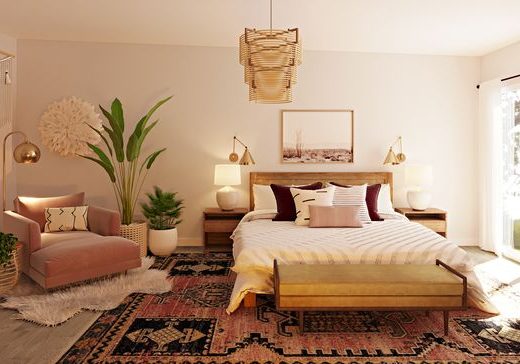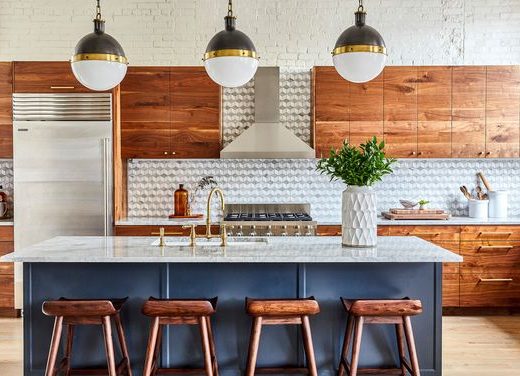Natural lighting can impact our mood and well-being profoundly. It maximizes visual comfort and creates a soothing ambience in our homes.
Exposure to daylight is an effective way to boost productivity as it helps to relieve stress and even make your immune system stronger.
However, bringing natural light into a dark room can be tricky. Therefore, instead of opting for extreme measures such as installing windows everywhere, minor changes can be brought about to create the illusion of more natural light.
1. Choosing the right colours
Start with colours! Choosing the right colour palette for your interiors is essential to accentuate natural light. For instance, light colours help to illuminate the space further. Dark block colours can create hindrance in the way of light flooding inside your home, whereas choosing softer shades of white will make the same space feel brighter. However, applying a bright white paint can make the interiors feel cold, rather an off-white shade or eggshell colour will create a much warmer effect. A few more colours to make your room appear sunny and lively other than all-white are bright yellow, pastel colours, warm beige or lighter greys.
One trick to creating the illusion of height and space is to paint the ceiling a couple of shades lighter than the walls. Another trick is to choose a paint that has a satin or glossy finish. This creates a mirror-like effect and reflects light, something a matte finish painting cannot produce.
2. Flooring
While considering mediums that welcome natural light, flooring is an essential element because it can be transformed into light-friendly reflectors if the right materials and colours are chosen. Some convenient options for flooring are warm-coloured wood, ceramic or stone incorporated with a polished finish. If you prefer to have carpets to elevate the expression of your room, opt for minimal neutral coloured rugs. It brightens up the ambience of small spaces and is most beneficial for rooms with darker floors.
3. Use of glass & mirrors
Glass can be used in multiple ways to improve the quality of indoor lighting. To start with, mirrors can do wonders when it comes to lightening up a space if positioned accurately. In order to amplify the spread of natural light, the use of full-length mirrors is the most suitable choice. Additionally, strategic placements of mirrors in hallways reflect light into dark rooms to make them appear more spacious. Another quick fix is to replace sections of exterior walls that aren’t part of the structural system with glass blocks. The blocks bring a fair amount of natural light in places no light would enter at all. Installing skylights is also a sensible idea as they bring in soft diffused sunlight that is reflected off of clouds. To read more about ways to use mirrors in your home, read how to use mirrors in home decor.
4. Windows
An ordinary but effective way to boost natural light indoors is to install properly placed floor-length windows and doors. Bi-folding doors are particularly a good pick as they transform an entire wall into a glass for breath-taking views at the same time ensures ultimate light levels. If possible, skip blinds or heavy drapes for the windows – this will contribute even more to the creation of a well-lit space. However, if glare becomes an issue, white cotton curtains can come to the rescue as they do not absorb light at all. This also makes the windows appear taller and wider if hung from a higher position.
5. Light coloured furniture
Selecting light-toned furniture is a crafty way to bring more light into a room because it produces a sense of brightness. It makes an otherwise claustrophobic room seem airy and capacious. Try angling the furniture towards the light, this helps to fill up the room with more luminosity, especially if the furniture has a glossy texture.
On the other hand, going minimalistic is a key move to keep your interiors light, breezy and well ventilated. Simply minimizing the amount of decor can brighten up a dark room immediately. Limiting the number of accent furniture, keeping walls as bare as possible and sticking to only essentials are some ways to approach such minimalism.
6. The importance of accessories
Home decor accessories and fixtures might initially sound insignificant but can eventually play a huge role in this matter. For example, low-key light fixtures like flushed or semi flushed mounts, overhead lighting, recessed lighting can light up an entire room evenly. Such lighting fixtures are a great solution to light up alcove spaces. Moreover, adding accessories with shiny and reflective surfaces can help diffuse natural light such as metallic, glass and mirrored tops.
7. Trim greenery
Trees and shrubs growing outside windows and doors can partially block the light pouring in through the openings. The impact that greenery can have on indoor light levels cannot be overlooked just because it seems like an almost negligible factor. It makes all the difference if not maintained properly. It is thus essential to give attention to the outdoor garden and trim any trees, bushes or climbing plants whenever necessary in order to keep the windows and doors from getting overshadowed.
Having an abundance of natural light is an integral part of any interior space. It instils both mindfulness and enhances physical wellbeing. Adapting a few minor changes can uplift the entire setting of a gloomy room into a bright & lively space.
For an online interior design consultation or further professional guidance with your interiors, contact us at Sheraspace!






No Comments